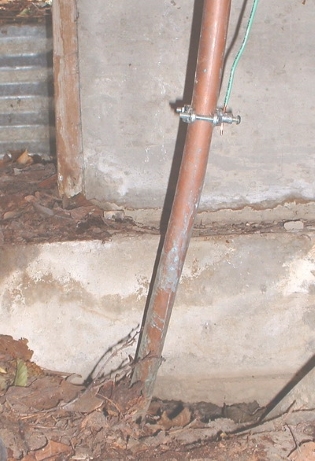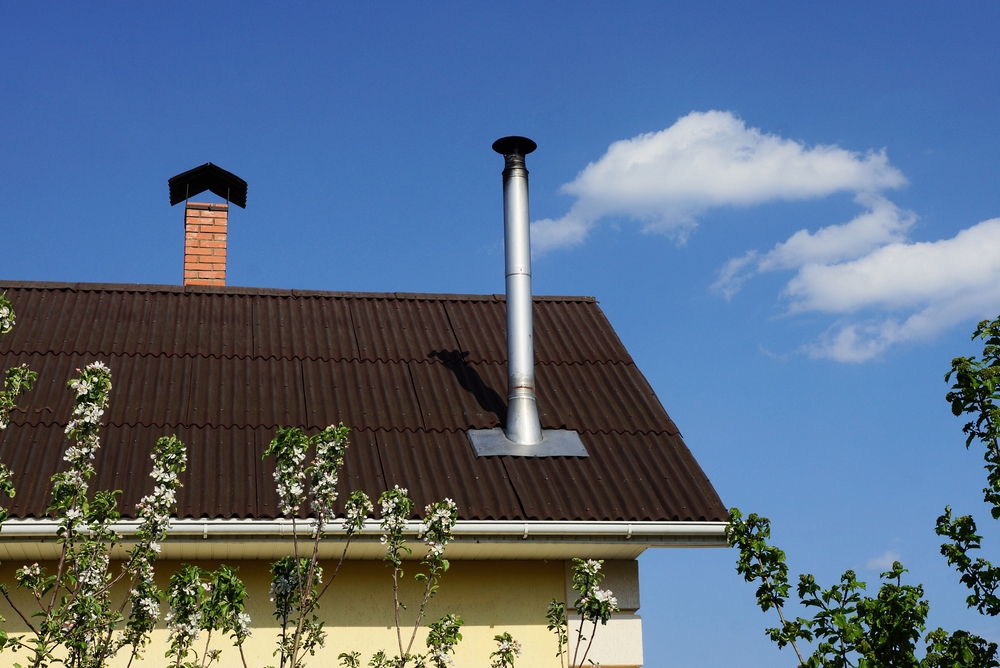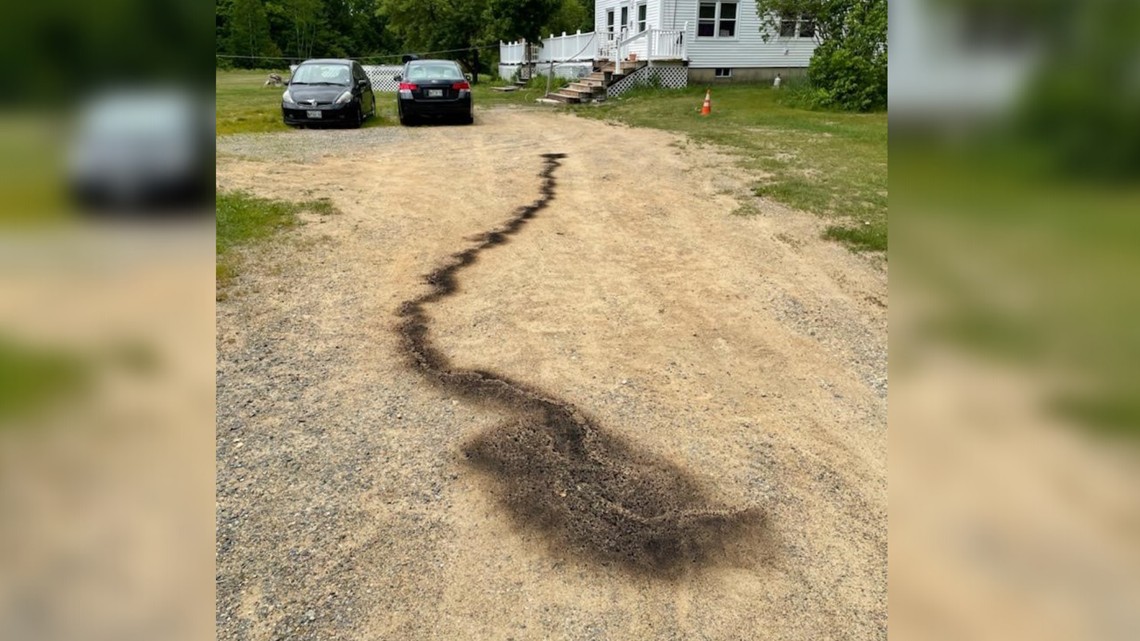The Internet is full of videos showing how lightning strikes trees.
This is not surprising, after all, trees are often higher than nearby buildings and it is much 'more convenient' for them to accept lightning. In addition, rainwater covering tree during the rainstorm is an excellent conductor of the lightning current.
In the picture below, made with a long exposure interval you can see the lightning passing through the tree (according to the author).
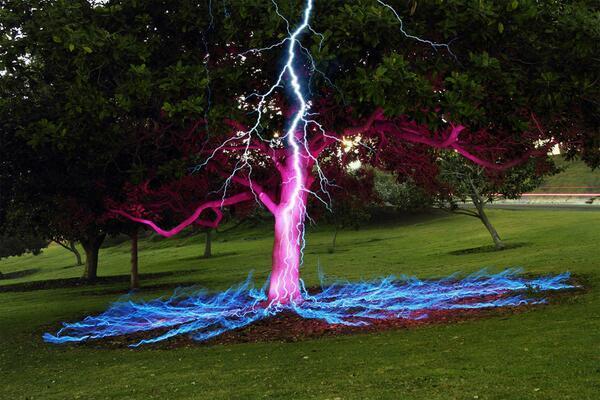
Photo by Darren Pearson
Read more about the phenomenon of lightning and lightning striking trees:
Lightning can arise inside a cloud, between clouds and between the cloud and the ground. The last is what we normally see during a thunderstorm. The small ice particles collide inside thunderstorm clouds, causing accumulation of electric charge. Objects on the ground, especially as high as mountains, buildings, trees, and even people, can also accumulate electric charge. When electric charges coming down from the clouds are opposite to electric charges coming from the ground, they join and create the electric current coming from the cloud to the ground very fast. This is what we call a flash or lightning strike.
You might have experienced something like that known as static electricity. For example, if you walk on the carpet and then touch some metal, you can feel the power of the electric discharge. The discharge is static electricity between you and the metal object.
Although lightning discharge looks very big for the human eye, in reality it is only a few inches wide. However, the fear we feel when we see lightning is based on real danger, though the final is not always as bad. The danger is not just its shock effect, but the temperature, which reaches 30,000 ° C (approximately five times hotter than the surface of the Sun).
So what happens when a powerful lightning strikes something on the Earth? In particular, what happens when lightning strikes the living tree?
Although it seems that a tree can be burned in an instant, but lightning may actually lead to various consequences for the trees. What exactly happens depends on several factors like: what kind of tree it is, how much moisture it contains , general condition at the moment of impact, and the intensity of the lightning strike.
Trees experience extensive damage when the moisture inside is exposed to super high temperatures caused by lightning. A layer of water is mostly deeper than the outer bark layer, therefore, lightning strikes often result in trees breaking into large parts.
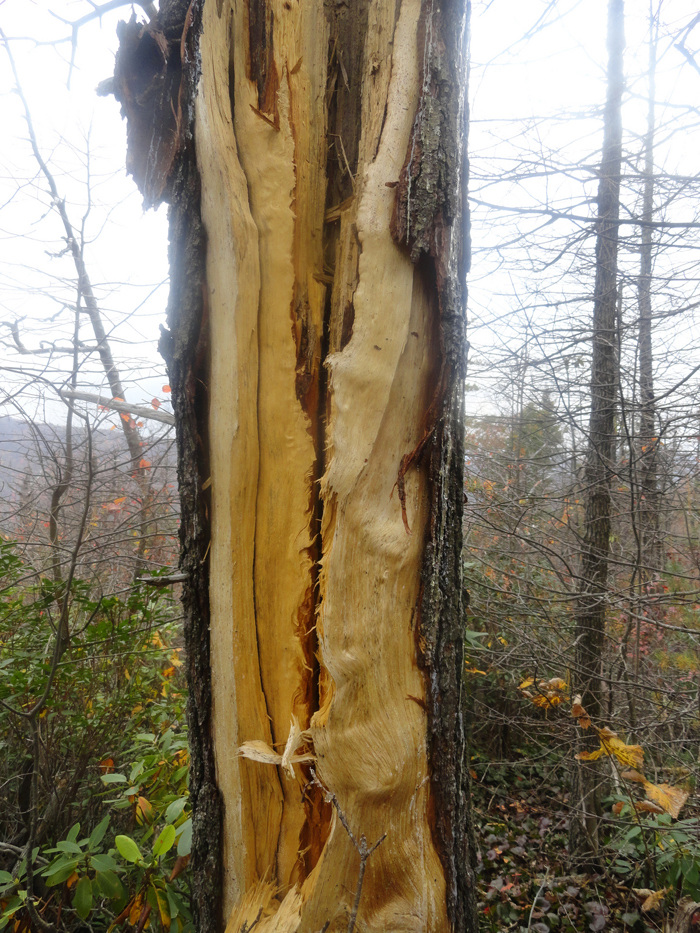
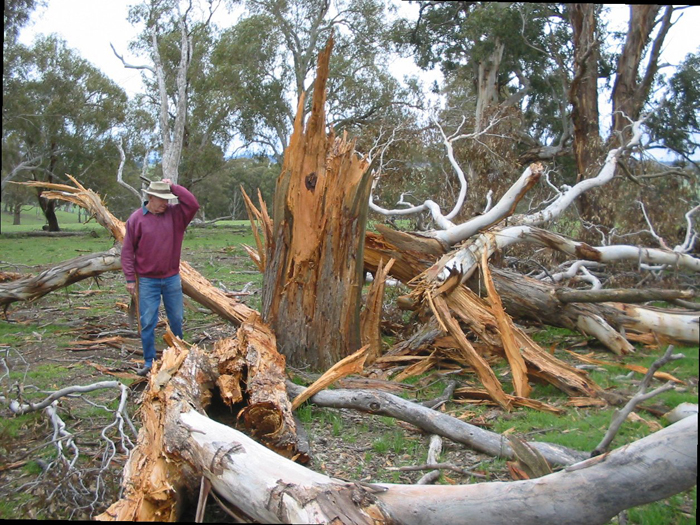
If the outer bark layer is impregnated with water from extensive precipitation, the lightning may go along the external tree side into the ground, and in this case the damage is minor.
Given that the lightning passes along the "shortest" path into the ground, to be it is very dangerous to be under trees during thunderstorms, both for people and animals, and for motor vehicles and electrical equipment.
When selecting and designing lightning protection for some object, the trees in the area should also be taken into account as a possible point of lightning strikes as well.
Related Articles:

